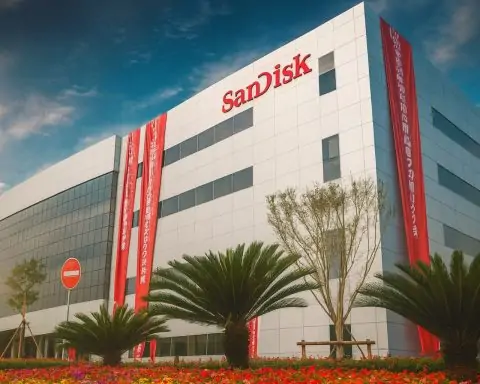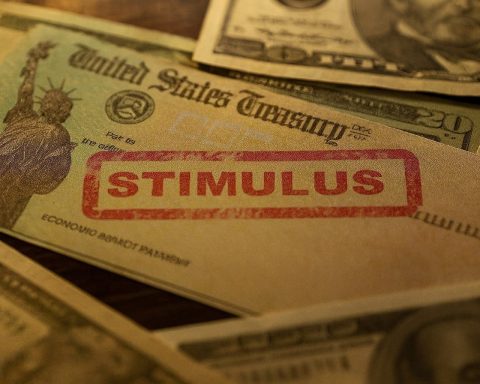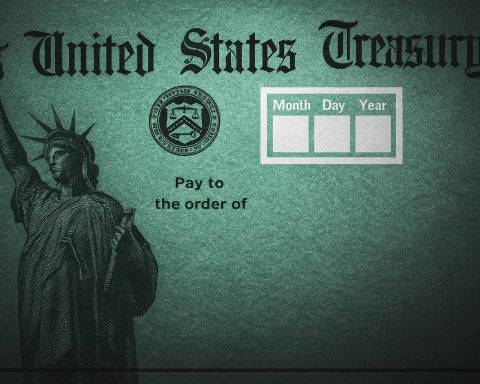Overview: What’s moving in US tax policy today
As of Wednesday, November 26, 2025, US tax news is dominated by four big themes:
- A sitting US senator agreeing to pay millions in overdue federal income tax
- The IRS moving ahead with new tax credits created by the One, Big, Beautiful Bill Act (OBBBA)
- Fresh guidance for tipped and overtime workers under Trump’s “No Tax on Tips” agenda
- Persistent online rumors about new November “stimulus checks” that fact‑checkers say are not real
On top of that, states are tweaking their own tax credit programs, and the Treasury–IRS team has released complex guidance for multinational companies on foreign tax timing and currency gains under Notice 2025‑72. [1]
Here’s a detailed rundown of the most important developments.
Sen. Jim Justice to pay nearly $5.2 million in overdue federal taxes
In a high‑profile enforcement action, Sen. Jim Justice of West Virginia has agreed to pay nearly $5.2 million in overdue personal federal income taxes dating back to 2009. [2]
Key points from court filings and Associated Press reporting:
- The US Department of Justice filed a lawsuit this week alleging that Jim and Cathy Justice had “neglected or refused” to fully pay their federal income tax bill from 2009.
- On the same day, their attorney entered a joint motion for consent judgment, agreeing to pay roughly $5.2 million plus interest and statutory additions, subject to court approval. [3]
- The IRS had already filed liens totaling more than $8 million against the couple last month, and West Virginia state authorities have separately filed liens over unpaid state taxes connected to Justice‑owned properties. [4]
Why it matters
- The case underscores the IRS’s post‑OBBBA emphasis on visible enforcement at the high end of the income and wealth distribution.
- It’s a reminder that federal tax debts don’t quietly disappear, even for wealthy public officials: the IRS can and does pursue litigation, liens and consent judgments over many years.
For ordinary taxpayers, the direct impact is limited, but politically this will feed ongoing debates about whether the IRS is doing enough – or too much – when it comes to high‑income enforcement.
New K–12 scholarship tax credit moves toward 2027 launch
The One, Big, Beautiful Bill Act (OBBBA), signed in July 2025, created a new federal tax credit for donations to Scholarship Granting Organizations (SGOs) that fund K–12 education. [5]
On November 25, Treasury and the IRS issued Notice 2025‑70 and a formal news release (IR‑2025‑115) asking for public comments on how to implement the credit. [6] News coverage today is highlighting what this could mean for millions of families. [7]
How the new federal scholarship credit works (as proposed)
According to the IRS: [8]
- The credit will start January 1, 2027.
- Individuals will be able to claim a non‑refundable federal tax credit up to $1,700 per year for cash donations to qualifying SGOs.
- SGOs must provide scholarships for elementary and secondary students from low‑ and middle‑income families.
- States have to opt in by certifying which organizations in their state qualify as SGOs and by sending that list to the IRS.
The IRS is specifically asking for comments on:
- How states should certify SGOs each year
- How to handle organizations that operate in more than one state
- What reporting and recordkeeping requirements SGOs should have [9]
Public comments are due December 26, 2025, via Regulations.gov (docket IRS‑2025‑0466). [10]
Why this is big tax news
- For donors, the credit effectively makes qualifying education donations more valuable than standard charitable deductions – though many details (interaction with itemized deductions, AGI limits, etc.) will be clarified in future regulations.
- For families, the program is designed to channel more private money into K–12 scholarships, potentially expanding access to private schools and other education options. [11]
- For states, there’s a crucial policy choice: opt into the federal system and build a state‑level infrastructure to oversee SGOs, or stay out and leave this particular federal benefit on the table.
If you’re likely to donate to K–12 scholarship funds, 2026 will be the year to watch for final regulations and for your state’s decision on whether to participate.
“No Tax on Tips”: IRS explains new tip and overtime deductions for 2025–2028
A major piece of tax guidance affecting millions of workers landed just days ago and is still driving coverage today: IR‑2025‑114 and Notice 2025‑69, which explain how service‑industry and other workers can claim new deductions for qualified tips and overtime for tax years 2025–2028. [12]
These provisions come from OBBBA’s “No Tax on Tips” and enhanced overtime rules.
The basics of the new deduction
According to the IRS: [13]
- Eligible workers can deduct up to $25,000 per year in qualified tips, with the deduction phasing out for modified AGI above $150,000 (single) or $300,000 (married filing jointly).
- The rules also provide deductions related to qualified overtime compensation, with details spelled out in the notice.
- The IRS is not redesigning Forms W‑2 and 1099 mid‑year. Instead, Notice 2025‑69 explains how workers can compute their deductible amount using existing boxes on Form W‑2, Form 4137 (for unreported tips), and similar forms. [14]
Because employers often don’t separately flag “qualified tips” or “qualified overtime” on wage statements, the guidance emphasizes record‑keeping – detailed logs of shifts, tip amounts and overtime hours – to back up the deduction. [15]
What workers should do now
- If you’re a restaurant server, bartender, hotel worker, hair stylist, rideshare driver, or other tipped worker, start saving pay stubs and keeping a log of cash and electronic tips.
- If your overtime pay could qualify, keep track of hours, rates and pay periods.
- Expect updated instructions and possibly new worksheets in the 2025 income tax forms so you can calculate the deduction when you file in early 2026. [16]
Given the size of the deduction cap, this guidance could translate into substantial federal income tax savings for many service‑industry workers over the next four years.
Cross‑border rules: Notice 2025‑72 and the end of the “one‑month deferral” election
For multinational companies, the headline of the day is Notice 2025‑72, released yesterday and widely analyzed today by major tax firms. [17]
OBBBA repealed the long‑standing “one‑month deferral” election under Internal Revenue Code § 898(c)(2) for certain controlled foreign corporations (CFCs). That election let a foreign subsidiary use a tax year starting one month before its US parent’s year, creating timing differences for income and foreign tax credits. [18]
What Notice 2025‑72 does
The notice announces that Treasury and the IRS intend to issue proposed regulations that will:
- Implement the repeal of the one‑month deferral election for specified foreign corporations, generally effective for tax years beginning after November 30, 2025. [19]
- Provide transition rules so that affected foreign corporations have a short tax year (“first required year”) to align with shareholder tax years and clear rules on how to allocate foreign income taxes between the short year and the following year. [20]
- Modify Section 987 foreign currency rules so that “pre‑transition” currency gains and losses are spread over 120 months rather than simply over ten tax years, smoothing out the effect of short tax years created by the repeal. [21]
Taxpayers can generally rely on the notice now, as long as they apply the rules consistently across the affected entities and years. [22]
Who needs to pay attention
- US‑headed groups with specified foreign corporations that previously used the one‑month deferral election
- Companies with qualified business units under Section 987 and significant foreign currency exposures
- Tax departments that need to model foreign tax credit positions for 2025 and 2026
For most individual taxpayers, this is background noise; for global companies, it’s a significant piece of the post‑OBBBA international tax landscape.
IRS alternative dispute resolution push: Fast Track Settlement becomes easier to use
The IRS’s Fast Track Settlement (FTS) program – a type of mediation that lets taxpayers try to resolve disputes during an audit instead of waiting for a full Appeals case – has been quietly overhauled during 2025. Today, Bloomberg Tax is highlighting those changes and arguing they’re an important step toward faster, more taxpayer‑friendly resolutions. [23]
Key changes, drawn from IRS announcements and practitioner analysis: [24]
- Single‑issue cases now qualify. Historically, if any issue in a case was ineligible for Fast Track, the entire case could be rejected. A 2025 pilot – now effectively permanent – allows FTS to be used for one or more issues, even if others are excluded.
- The IRS has raised the bar for denying access to FTS: managers now need to sign off, and taxpayers are supposed to receive an explanation if their request is denied.
- The agency has updated manuals and publications to promote FTS and other ADR tools more actively, especially for Large Business & International (LB&I) cases. [25]
For businesses facing complex audits, the message is clear: don’t wait for litigation if you can settle earlier. Fast Track can compress what might be years of dispute into a matter of months, with an independent Appeals mediator helping both sides reach a compromise.
State tax highlights: Pennsylvania and Oregon change the map
While federal tax policy gets the headlines, today also brings newsworthy state‑level tax developments.
1. Pennsylvania’s new Working Pennsylvanians Tax Credit
Pennsylvania’s newly enacted, $50.1 billion state budget includes a Working Pennsylvanians Tax Credit that mirrors the federal Earned Income Tax Credit (EITC). [26]
According to Spotlight PA:
- The credit is aimed at low‑ and moderate‑income workers, with eligibility tied to income, filing status and number of children, following federal EITC rules.
- The state credit equals 10% of the federal EITC, which is capped at $8,046 for 2025. That means a maximum Pennsylvania credit of about $800 per return; if the credit exceeds the state income tax owed, the difference is refundable. [27]
- The Shapiro administration estimates roughly 940,000 Pennsylvanians will benefit, receiving about $193 millionin combined relief. [28]
- The credit starts with 2025 state returns, filed in early 2026.
For eligible workers, the practical takeaway is simple: if you qualify for the federal EITC and file electronically, the state credit should be automatically applied to your Pennsylvania return. [29]
2. Pennsylvania’s Affordable Housing and film tax credits
The same budget overhauls the state’s Affordable Housing Tax Credit to give the Pennsylvania Housing Finance Authority more flexibility. Instead of tying credits directly to investor‑selected projects, credits will be auctioned, with proceeds pooled and then granted to priority projects chosen by the agency. [30]
Separately, a widely shared story today notes that an HBO crime drama, TASK, will receive $49.8 million in Pennsylvania film tax credits – the largest credit ever awarded to a single production in the state. [31]
- That amount represents roughly half of the state’s 2025–26 Film Production Tax Credit Program budget.
- HBO estimates the production will create 3,700 jobs and add more than $194 million to Pennsylvania’s economy. [32]
Supporters say the credit boosts the state’s creative economy; critics continue to question whether the economic return justifies the large tax expenditures, especially since most credits are sold at a discount to other taxpayers. [33]
3. Oregon homeowners race to use expiring federal energy credits
In Oregon, local coverage is warning that residents have “just more than a month” to take advantage of certain federal home energy tax credits that reduce the cost of heat pumps, insulation, windows and solar installations. [34]
Highlights: [35]
- The article notes that qualifying improvements completed by December 31, 2025 can be claimed on Form 5695 (Residential Energy Credits) with your 2025 federal return.
- Combined with incentives from the nonprofit, state‑partnered Energy Trust of Oregon, total savings can cover half or more of project costs for some households.
- Some of the most generous current federal tax credits are set to expire or shrink after 2025, so there is a strong “use it now” element for homeowners considering upgrades.
If you live in Oregon – or any state – and are planning energy‑efficiency work, it’s worth reviewing the IRS clean energy and efficiency credit pages and local utility or state incentives before year‑end.
Stimulus checks and IRS direct‑deposit rumors: what’s actually happening
If your social feeds are full of alerts about “$2,000 November stimulus checks” or “IRS direct deposit relief payments,” you’re not alone. A new fact‑check from FOX 5 DC, updated today, walks through what’s real and what’s rumor. [36]
No new nationwide November 2025 stimulus law
According to the report and to the IRS’s own Newsroom: [37]
- Congress has not passed any new law authorizing broad federal stimulus checks for November 2025.
- The last round of traditional economic impact payments was in 2021. Later automatic payments were limited to people who had not claimed the Recovery Rebate Credit on 2021 returns; the final deadline to file for that credit was April 15, 2025 and has passed. [38]
- The IRS Newsroom contains no official release announcing a new one‑time $2,000 or $1,390 payment to all taxpayers for late 2025. [39]
Trump’s proposed $2,000 “tariff dividend”
Former President Donald Trump has publicly floated the idea of using tariff revenue to fund “tariff dividend” checks of at least $2,000 per person for low‑ and middle‑income households. [40]
However:
- This is currently a policy proposal, not enacted law.
- No legislation codifying a tariff dividend has passed Congress, and no payments have been approved. [41]
How to spot stimulus scams
FOX 5’s piece echoes long‑standing IRS warnings: scammers often send messages pretending to offer new stimulus payments in order to harvest personal data or demand bogus “processing fees.” [42]
Remember:
- The IRS does not initiate contact about tax bills or stimulus payments via text, email or social media DMs.
- Legitimate IRS contacts start with a letter or official notice, which you can view and verify via your IRS online account. [43]
If you see posts promoting a precise dollar amount with no link to an IRS or official government page, treat them as unverified at best, outright scams at worst.
What this means for taxpayers right now
Putting today’s developments together, here are some concrete next steps depending on your situation:
If you’re a service‑industry or overtime worker
- Start tracking your 2025 tips and overtime carefully – they may generate a significant federal deduction under the “No Tax on Tips” provisions through 2028. [44]
If you donate to education
- Watch for more details on the new K–12 scholarship credit and follow your state’s debate on whether to opt in. Contributions that qualify starting in 2027 could give you a dollar‑for‑dollar federal tax credit up to $1,700, on top of any state benefits. [45]
If you live in Pennsylvania
- Check whether you qualify for the Working Pennsylvanians Tax Credit in 2025; if you’re already eligible for the federal EITC, you’re likely in line for up to $800 in refundable state credit as well. [46]
If you’re planning home energy upgrades
- Review federal energy credits and any state programs; in Oregon, several generous credits are set to expire at the end of 2025, and other states have similar timelines. [47]
If you see “November 2025 stimulus” posts
- Verify any claim at IRS.gov or through trusted news outlets. At this point, there is no broad federal stimulus payment scheduled for November or December 2025. [48]
And as always: this is news, not personal tax advice. Before making big financial or filing decisions, talk with a qualified tax professional who can apply these developments to your specific situation.
References
1. www.irs.gov, 2. www.timesleaderonline.com, 3. www.timesleaderonline.com, 4. www.timesleaderonline.com, 5. www.irs.gov, 6. www.irs.gov, 7. www.newsweek.com, 8. www.irs.gov, 9. www.irs.gov, 10. www.irs.gov, 11. www.newsweek.com, 12. www.irs.gov, 13. www.irs.gov, 14. www.irs.gov, 15. www.webpronews.com, 16. www.irs.gov, 17. www.irs.gov, 18. kpmg.com, 19. kpmg.com, 20. www.irs.gov, 21. www.irs.gov, 22. www.irs.gov, 23. news.bloomberglaw.com, 24. www.irs.gov, 25. www.irs.gov, 26. www.lockhaven.com, 27. www.lockhaven.com, 28. www.lockhaven.com, 29. www.lockhaven.com, 30. www.lockhaven.com, 31. broadandliberty.com, 32. broadandliberty.com, 33. broadandliberty.com, 34. ashland.news, 35. ashland.news, 36. www.fox5dc.com, 37. www.fox5dc.com, 38. www.fox5dc.com, 39. www.irs.gov, 40. www.fox5dc.com, 41. www.fox5dc.com, 42. www.fox5dc.com, 43. www.fox5dc.com, 44. www.irs.gov, 45. www.irs.gov, 46. www.lockhaven.com, 47. ashland.news, 48. www.fox5dc.com










